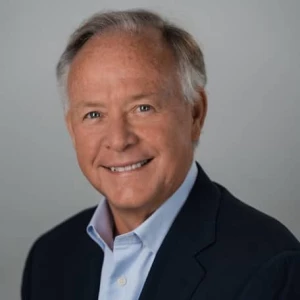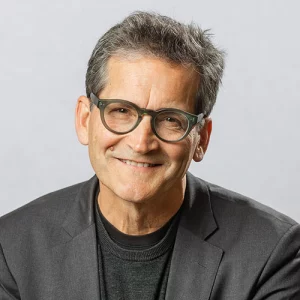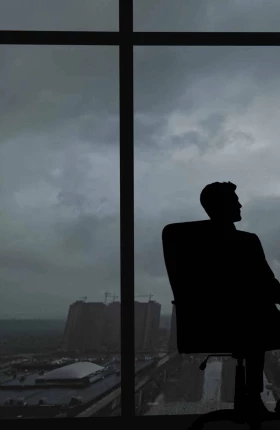For the CEO
Why this article is a must-read for CEOs.
For nearly a decade, CEOs have been told that being vulnerable will make them more effective leaders. A random web search of “CEO vulnerability” returns a slew of results touting its myriad benefits, from building greater trust and boosting employee engagement to unlocking growth and outperformance.
But moving past more traditional notions of the strong, all-knowing CEO can be fraught with fear. Some chief executives may feel uncomfortable being vulnerable with anyone other than their most trusted, closest confidants. Others may worry it could create an opening for competitors and critics to exploit, or question whether it’s a passing leadership fad.
Fear and skepticism are understandable, especially from individuals who’ve ascended to the very top of the corporate ladder. “Leaders have this never-let-them-see-you-sweat attitude that seems to get more important the higher up you go,” says Jennifer Thomas, a BCG partner and the firm’s director of executive coaching.
Nevertheless, the current business landscape—with its mounting complexity, uncertainty, and disruption—argues in favor of a more human-oriented approach to leadership.
Five Strategies for Healthy Vulnerability
“The traditional kind of leader—the one who tells everyone what to do and uses carrots and sticks to align people’s behavior—is no longer valid,” says Hubert Joly, former chairman and CEO of Best Buy. “People don’t want to follow this kind of leader.”
A closed-off, “my way or the highway” approach can have serious business consequences. Companies led by CEOs who project an aura of invincibility may, for example, struggle to tackle problems quickly. They may also find it difficult to foster a culture of innovation where failure is seen as a necessary part of the learning process.
When people fear speaking up, “there might be hundreds of ideas that never get heard,” says Joe Davis, BCG senior partner and author of The Generous Leader. “When you share more of yourself, your opportunities, challenges, uncertainties, and even insecurities, it offers freedom for others to do the same.”
When you share more of yourself, your opportunities, challenges, uncertainties, and even insecurities, it offers freedom for others to do the same. — Joe Davis
Failing to connect with employees on a more human level can also erode engagement. It’s a growing problem: A recent Gallup poll found that only 30% of US employees feel highly involved and enthusiastic about their work and workplaces, the lowest share in over a decade. A separate Gallup poll found that 62% of employees globally are not engaged and are doing the bare minimum at work, while 15% are actively disengaged and looking for a new job.
For CEOs, unlocking the value of vulnerable leadership starts with understanding what it is, what it is not, and its potential benefits. From there, it’s a matter of pushing past the common fears associated with sharing more of oneself—and building strategies for doing so in a healthy, sustainable way.
Leadership by Design: Navigate the complexities of modern leadership
What Vulnerability Means to CEOs
Vulnerability necessarily involves risk, or perceived risk: to reputation, to career, to relationships, to the trust one has earned, and to the organization.
“It’s the experience of one’s precariousness, one’s finitude,” says Gianpiero Petriglieri, associate professor of organizational behavior at INSEAD and a psychiatrist who studies leadership, identity, and learning. “It’s closely tied to the possibility of loss.”
For some CEOs, being vulnerable boils down to having the courage—and the strategic mindset—to not be all-knowing all the time.
[Vulnerability means] being absolutely comfortable and confident about saying ‘I don’t know,’ and asking for help from those who might. — Sir David Sloman
Sir David Sloman, former head of the UK’s National Health Service, London region, says that for him, vulnerability means “being absolutely comfortable and confident about saying ‘I don’t know,’ and asking for help from those who might.”
Joly, who arrived at Best Buy with no retail industry experience and went on to lead a legendary turnaround, says being open about his lack of knowledge helped him unlock valuable insights from across the organization, including store associates. “[Vulnerability is] being able to say, ‘My name is Hubert, and I need help,’” he says. “The beautiful thing is that it’s true.”
Kristin Peck learned the value of being more authentic than perfect soon after ascending to the CEO role at animal health company Zoetis in January 2020. “My predecessor [Juan Ramón Alaix] was the role model for what I thought a CEO should be: always poised, calm, and infallible—always having the answer,” she says.
Then, two months into her tenure, the COVID-19 pandemic struck. “We were all figuring out how to navigate life in a pandemic. We started leaning into the heart, acknowledging there are struggles—and realizing it was okay to not have all the answers.”
We started leaning into the heart, acknowledging there are struggles—and realizing it was okay to not have all the answers. — Kristin Peck
Experiences like these also help define what vulnerability is most definitely not—namely, a performative tool leaders deploy to make themselves appear more likeable, or relatable.
“Employees know that you make 300 times more money than they do. And you live a life most likely divorced from the one they live,” says Petriglieri. “The idea that if you shed a tear or two that makes you more approachable is ridiculous.”
Experts advise leaders think of vulnerability for what it is—an inescapable part of being human and a foundation of authentic leadership. “Vulnerability is not a choice,” says Amy Edmondson, Novartis Professor of Leadership and Management at Harvard Business School. “It’s a fact.”
Benefits to the Organization
While the buck typically stops with the CEO, helming a company today, experts say, is more of a collaborative enterprise—one that calls for humility, courage, connection, openness to ideas and to criticism.
Vulnerability captures all those qualities, helping a leader create the kind of environment where challenges are met head on and frank discussions with the board are greeted as a sign of strength.
“You lose trust if you give the impression that you have everything under control,” says Joly, adding it could also signal that a CEO doesn’t see problems where others clearly do.
You lose trust if you give the impression that you have everything under control. — Hubert Joly
Appearing infallible can also telegraph to employees that it’s not okay to fail, stifling the kind of bold, innovative thinking necessary for remaining competitive in a rapidly evolving, unpredictable world.
“Transformation requires the collective creativity of the organization to be unleashed,” says Jim Hemerling, a BCG managing director and senior partner and coauthor of Beyond Great. “You need people to innovate. You need them to be creative. That requires some level of trust, and the willingness to be vulnerable, to say ‘we [executives] don’t have all the answers.’”
The workplace zeitgeist, especially among younger cohorts of workers, further argues for CEOs to be more authentic and empathetic. The sharpest declines in US employee engagement are among younger millennials and Gen Z, according to Gallup. And BCG research shows that employees who are very satisfied with their managers are 72% less likely to leave the company than those who are very unsatisfied.
More young people are looking to leaders who are more open. — Jim Hemerling
“More young people are looking to leaders who are more open,” says Hemerling.
Yet for all the positives CEO vulnerability can generate, research suggests it is still relatively rare. Of roughly 14,000 managers author Jacob Morgan surveyed globally for his 2023 book Leading with Vulnerability, only 16% said their leaders requested help, admitted mistakes, or acknowledged challenges.
“The shift is occurring,” says Hemerling, “but there’s a wide spectrum in the practice and willingness and the belief in its benefits.”
Pushing Past Fear
Vulnerability brings with it a passel of fears. One of the most obvious for any leader is the fear of appearing weak. “Everyone looks to you to feel ‘we got this,’” says BCG’s Thomas. “So, leaders wonder whether showing vulnerability would shake others’ confidence in them or the organization.”
In fact, it can signal the opposite. “Being open about your weaknesses is an ultimate sign of strength,” says Edmondson.
Another common hurdle to overcome is fear of being wrong. “[Most CEOs] “feel the weight of the role they’ve been asked to play, of the decisions they must make (always with imperfect information), of the people who depend on them,” says Hemerling. “From employees and customers to shareholders and society more broadly.”
For Hemerling, the gateway to moving past these fears is vulnerability itself. “Being willing to say ‘I don’t know the answer’ is a way of countering the fear of being wrong,” he says.
CEOs may also harbor fears of appearing incompetent, underserving, or unlovable. “At certain moments, everyone has imposter syndrome—everyone,” says Thomas. “And everyone has periods where they’re less competent or comfortable.”
Sloman says during his tenure with the NHS, he worried that he appeared undeserving because his modest upbringing and education contrasted with that of many of his peers. He eventually overcame that barrier by reminding himself that he’d earned his position and the right to be himself at work.
Leaders wonder whether showing vulnerability would shake others’ confidence in them. — Jennifer Thomas
“If you spend your life trying to be something you’re not, it will make you mentally ill,” says Sloman. “People see through it straight away.”
Another aspect of vulnerability that may leave CEOs feeling uneasy is fear of trusting others. “If people have let you down, that can get in the way of your willingness to trust them,” says Hemerling. “But if you’re afraid of being let down, that will get in the way of giving them autonomy.”
Conquering this fear, says Hemerling, comes from turning to others for help. “You’re letting them make a personal investment. And as you begin to trust others, and those people come through for you, it creates a virtuous cycle of building trust in others.”
Five Strategies for Healthy Vulnerability
Results-driven CEOs have a lot to gain from vulnerability. “Research shows that the leaders with the best results are the ones who have a positive connection with their people,” says Emma Seppälä, author of the book Sovereign, who teaches executive education at Yale’s School of Management. “They uplift their teams because they take a values-driven approach.”
Still, CEOs need to achieve balance. Vulnerability can compound what Nitin Nohria, former dean of Harvard Business School, describes as the “high levels of emotional labor” the CEO role
To help mitigate unintended outcomes, leadership experts offer a number of strategies CEOs can adopt to embrace and show vulnerability in a healthy way:
Start small. Exchanging personal stories is one of the most powerful ways leaders can break the ice. BCG’s Davis advises leaders to start conservatively, sharing a little bit about themselves and their lives to test how others respond. “It doesn’t have to be a big revelation or letting your emotions hang out,” he says.
Share formative experiences. Whether it’s a personal development journey or slip-ups and failures, CEOs who share formative moments can appear more approachable and not threatened by criticism. “The faster the world changes, the more we need adaptability and learning, and the more that CEOs need to model that it’s okay to trip and learn [from it],” says Dan Cable, professor of organizational behavior at London Business School.
Such sharing can also impart greater understanding between a CEO and their senior leadership team, shedding new light on their motivations, predispositions, and how they arrive at decisions.
“We started realizing we had these connections,” says Zoetis’ Peck, recalling when she and her executive leadership team began exchanging personal stories. “Meeting people where they are, and creating a work environment that lets you be your whole self, means you have to be willing as leaders to share your whole self.”
Consider the time and place. When it comes to vulnerability, context matters. For example, the vulnerability a CEO shows to their board of directors will differ from what they share with direct reports. It’s also not appropriate “if it’s distracting for clients or problematic for the company’s value proposition,” says Edmondson.
Establish guardrails and be self-aware. The risk of harm is integral to vulnerability. It’s therefore crucial that leaders not share information, whether personal or business, with those who may seek to hurt them or want them to fail. Being self-aware about one’s state of mind is also important. “The greatest thing a leader can be is calm,” says Seppälä. “When you’re stressed, you stress everyone else out.”
Confess your mistakes and maintain perspective. Honesty fosters trust. When you don’t admit you’re wrong, “people will question not only your judgment but also your self-awareness,” says Edmondson. It’s also important to maintain perspective, because even the sturdiest guardrails cannot fully ensure a moment of vulnerability will deliver the intended results.
When it doesn’t work out as planned, “having a sense of purpose and healthy relationships are two huge protecting factors that can help CEOs maintain perspective and turn such moments into a developmental experience,” says Petriglieri.
Many CEOs may find vulnerability antithetical to their notion of the strong, self-assured leader. Others may question its validity and staying power, or they may see it as risky business in an era when corporate chiefs are increasingly under pressure to weigh in on hot-button political and social issues.
Such reservations are understandable, given the fears surrounding vulnerability. But as CEOs face an ever more complex, challenging business environment, vulnerability can help them, their teams, and their organizations learn and progress faster—and ultimately flourish.







